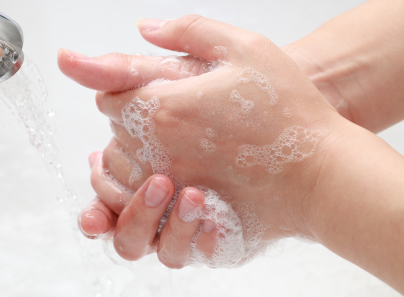You wash your hands with it… You brush your teeth with it… You clean your house with it…
This chemical landed on the FDA’s radar 40 years ago as a potentially dangerous toxin. But they’ve kept it on the backburner. They never even investigated it. Until now.
A spokesperson for the FDA recently said evaluating the toxin is “one of the highest priorities” for the agency. Finally! It only took four decades.
But why now? The heat is on. Lawmakers and consumer advocates are fed up and putting on the pressure.
| Essential oils are great alternatives to the toxic chemicals used today. Lavender, rosemary, and peppermint kill bacteria. For healthy, homemade toothpaste, mix 2 tbsp. coconut oil to 6 tsp. baking soda. Add a few drops of peroxide and peppermint oil for minty whitening power. Mix into paste. |
This chemical is linked to infertility, early puberty, and other hormone-related problems. Research shows it significantly impacts the thyroid hormone in male and female rats.1 It also lowers testosterone levels in males and decreases estrogen levels in females.2
And even worse… A 2012 study found the chemical restricts muscle contractions in mice and fish.3 In humans that could mean a weakened heart and skeletal muscles. In simpler terms: death.
Yet the FDA kept brushing it off. Despite the fact that it’s in products we use every single day… mouthwash, antibacterial soap, and even children’s toys.
We’re talking about triclosan, a common antibacterial agent.
Many companies have replaced the chemical to avoid problems. But not everyone. And those that aren’t, are going on the defense (including Colgate).
Brian Sansoni, spokesman for the American Cleaning Institute argues that hospitals use the chemical without any health concerns.
“You would think after heavy use in hospital settings over several decades it would have shown up by now,” said Sansoni. “This is one of those big urban myths that opponents of these products try to spread.”
Infertility, hormone imbalance, thyroid problems, and a weakened heart are not “urban myths.” And on top of that, triclosan creates antibiotic resistance. So what about the widespread incidence of MRSA in hospitals? The antibiotic-resistant strain of bacteria has doubled in just five years.4
This is another one of those situations where you need to take your health in your own hands. You’re better off just using hot water and regular soap and scrubbing for at least 20 seconds. Check labels. Go online to review product information in more detail. Triclosan is not always listed, but may still be present. So rule of thumb, when in doubt… pass on those products.
Like this Article? Forward this article here or Share on Facebook.
References:
1 http://toxsci.oxfordjournals.org/content/107/1/56.full
2 http://ncbi.nlm.nih.gov/pubmed/20562219
3 http://ncbi.nlm.nih.gov/pubmed/22891308
4 http://theatlantic.com/health/archive/2012/07/mrsa-on-the-rise-infections-have-doubled-in-5-years/260495/

